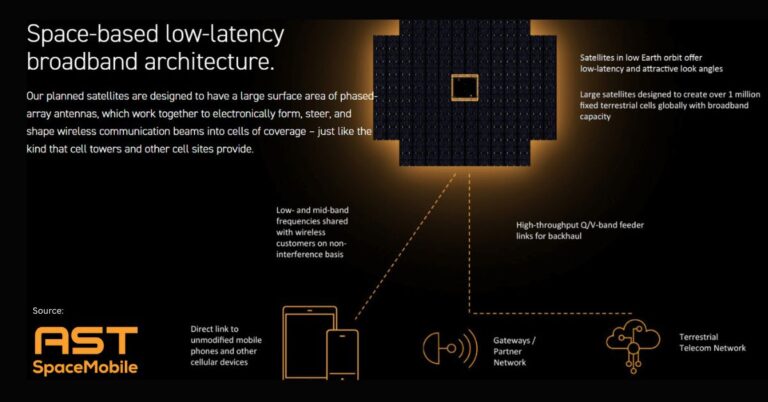Neutral Host 5G at 10 World Trade: In‑Building Coverage Playbook
A new neutral host 5G deployment at 10 World Trade in Boston’s Seaport sets a practical blueprint for scalable, multi-operator indoor connectivity in Class A commercial real estate.
Why Neutral Host 5G Matters Now for Indoor Coverage
Most mobile traffic is generated indoors, yet macro networks struggle to penetrate dense, energy-efficient buildings. At the same time, carriers are more selective about funding in-building systems, and enterprises want deterministic performance for collaboration, AI, and IoT. The 10 World Trade deployment—delivered by Boston Global Investors (BGI) with Aspen Venue Partners and Ericsson—addresses all three pressures with a small-cell-based, neutral host design that multiple operators can share while also supporting private 5G and future network slicing. The model aligns with broader industry trends: 3GPP-based indoor systems, shared infrastructure economics, and spectrum agility that includes CBRS in the U.S.
Neutral Host as the Standard for Indoor 5G
Ericsson’s approach allows multiple mobile network operators to ride a single radio access network while retaining their own spectrum and core connections. This reduces duplication, simplifies upgrades, and shortens time to service. It also shifts the conversation for property owners from discrete, carrier-by-carrier builds to a single platform that accommodates all tenants and operators. For operators, it offers an efficient path to extend indoor 5G where it matters—premium office towers, venues, and campuses—without shouldering the full capex of a bespoke DAS in each site.
Small Cells vs DAS: Economics and 5G Performance
Traditional distributed antenna systems remain effective for broad, multi-band coverage but can be expensive to deploy and upgrade for 5G mid-band and private spectrum. Small cells tied to a centralized baseband—and thin, low-profile radios like Ericsson’s Radio Dot units—typically lower TCO through simplified cabling, targeted capacity placement, and software-driven upgrades. That makes high-density floors, collaboration zones, and event spaces easier to serve without overbuilding. For asset owners, the practical outcome is better performance per dollar, faster tenant onboarding, and less disruption during refresh cycles.
Inside 10 World Trade: Ericsson Radio Dot, Multi‑Operator, CBRS
The new network blends carrier-grade performance with enterprise flexibility, enabling both public 5G coverage and private use cases under one infrastructure plan.
Ericsson Radio Dot System Foundation
The Radio Dot System uses compact indoor radios connected to centralized baseband equipment to deliver high-capacity 5G across floors and amenity spaces. The low-profile form factor eases aesthetic constraints and can often reuse existing pathways and power. Critically, the platform supports a wide span of spectrum options, including CBRS in the United States. That means property owners can start with public operator bands and layer in private 5G for secure applications like building automation, video analytics, or AR-assisted operations.
Multi‑Operator RAN Access and Backhaul Integration
In a neutral host model, each carrier connects to the shared RAN using their own core and transport, leveraging RAN sharing frameworks such as MORAN or MOCN depending on commercial and technical choices. This preserves each operator’s service differentiation while avoiding multiple parallel systems in the same risers and ceilings. For the building, a single operations model reduces energy consumption and ongoing maintenance. For tenants, it delivers consistent, predictable coverage from lobby to elevator to top floor—regardless of carrier preference.
Private 5G and Network Slicing Readiness
The design anticipates advanced enterprise needs. Private 5G can be enabled over shared or dedicated spectrum, with policy control tailored to application tiers. Network slicing, once commercially available at scale from operators, can segment secure capacity for critical workloads or VIP areas without installing separate infrastructure. The result is a connectivity fabric that adapts as digital demand grows, rather than requiring disruptive rebuilds every few years.
Strategic Takeaways for CRE, Operators, and Enterprise Tenants
This deployment illustrates how to align investment, user experience, and operational risk across the indoor 5G lifecycle.
Guidance for Property Owners and Developers
Neutral host small cells turn connectivity into a building-level utility—planned early, financed predictably, and operated as shared infrastructure. The advantages include faster lease-up with connectivity SLAs, lower lifecycle costs versus bespoke DAS upgrades, and a path to support smart-building applications without separate networks. Owners should plan fiber and power to every floor, centralize baseband in conditioned spaces, and define multi-operator agreements and response SLAs up front. Energy efficiency also improves with fewer overlapping systems and smarter radio scheduling.
Benefits and Considerations for Mobile Operators
The model accelerates indoor 5G expansion where macro signals underperform. Operators gain a ready-made footprint that supports their spectrum and device features, with reduced site acquisition and construction overhead. Integration with the operator core enables policy, security, and future slicing. It also offers a pragmatic way to serve enterprise-heavy districts where private networks, CBRS, and public 5G must interoperate cleanly.
What Enterprise Tenants and IT Gain
Tenants get reliable 5G for voice, collaboration, and mobility, while IT gains optional private 5G for low-latency, deterministic applications. The same fabric supports hybrid work, location-aware services, and IoT at scale. Integration with building systems can improve safety and operations, from E911 location accuracy to video and access control, provided policies and segmentation are designed from the outset.
What’s Next and How to Assess Similar 5G Projects
Execution details now matter as much as vendor selection, given the interplay of spectrum, security, and service-level expectations indoors.
Readiness of Slicing and Advanced Enterprise Features
Network slicing, uplink optimization, and advanced positioning will roll out unevenly across operators and devices. Buildings should be “slicing-ready” at the RAN and transport layers, with clear upgrade paths in contracts. For private 5G using CBRS, ensure Spectrum Access System coordination, interference management, and coexistence with public 5G are validated in high-density areas.
Operations Playbook, KPIs, and Security
Codify roles across owner, neutral host integrator, and operators. Monitor end-to-end KPIs like indoor SINR, mobility success rates between floors and elevators, uplink performance for video-heavy apps, and time-to-onboard new tenants. Align cybersecurity with enterprise policies, including SIM lifecycle, device onboarding, and segmentation between public and private slices or networks. Finally, build a multi-year refresh plan that budgets for software features, spectrum additions, and capacity scaling without ceiling rework.
10 World Trade demonstrates that a neutral host, small-cell-first strategy can deliver carrier-grade 5G indoors while preparing for private networks and slicing. For CRE portfolios, operators, and enterprises, it is a replicable pattern: shared RAN, spectrum flexibility, and an operations model that turns connectivity into a durable asset rather than a one-off project.









































